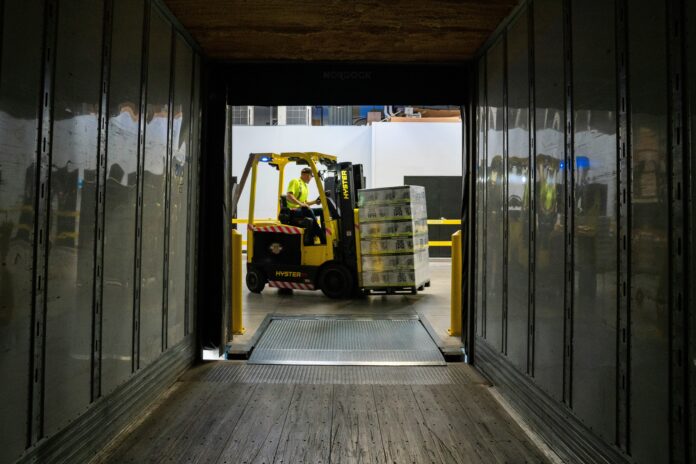
Uncertified or inconsistently trained operators clog lanes, spike damage claims, and slow turns. The cheapest throughput win this week isn’t a new RTG—it’s a tighter forklift-training loop that meets OSHA 29 CFR 1910.178(l) without bogging crews down.
What OSHA actually requires (plain English)
- Formal instruction (theory), 2) hands-on practical on your trucks, 3) documented evaluation, and 4) re-evaluation at least every 3 years—or sooner after incidents, new conditions, or new truck types. Keep clean records of who, what truck classes, when, and by whom.
A pragmatic 3-step program for yards
1) Standardize theory (≈90 minutes, online).
Give every operator the same baseline fast (English/Spanish). Same-day cards keep momentum. If you need a ready-to-go option, operators can complete OSHA forklift certification online.
2) Run the on-yard practical (your hazards, your gear).
Evaluate what actually slows you down: blind-corner horns, pedestrian “blue-light” crossings, spotter signals, uneven surfaces, wind/stack-height limits, and tight approaches to the stack face. Score consistently; coach on the spot.
3) Lock in records & renewal.
Track operator, classes evaluated, evaluator/signature/date, and next due date. Retrain after near-misses, equipment/layout changes, or observed deficiencies.
One-week rollout (template)
Day 0–1: Assign a coordinator; inventory truck classes; print cones/signage; stage the checklist.
Day 2: Crew A completes online theory (stagger by shift).
Day 3–4: 10–15 minute practicals per operator using the checklist; remediate same day.
Day 5: File records, set 3-year reminders, and post a laminated “Forklift Rules of the Road” with a QR to your policy.
Port-specific controls that move the needle
- Blue-light lane discipline: who yields, horn protocol, eye-contact rule.
- Wind + stack-height policy: define thresholds; require spotters above limits.
- Convex mirrors at maze corners and mandatory horn at blind points.
- Painted staging boxes to keep forks out of travel aisles.
- One standard set of spotter hand signals—posted and trained.
KPIs to watch (30–60 days)
Coverage % certified (target 95%+), near-misses per 1,000 moves (down), aisle-blockage minutes/shift (down), damage claims (down), time-to-card (same-day theory; practical within 3–5 days).
Deploy this for one crew this week. Lanes clear, turns smooth out, culture tilts safer—and throughput follows.





